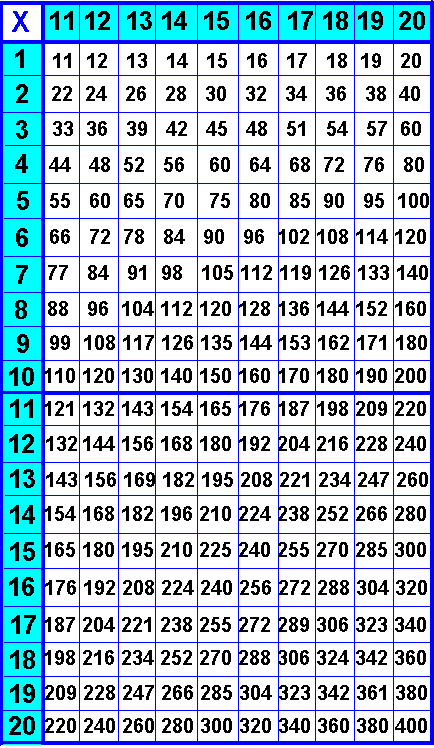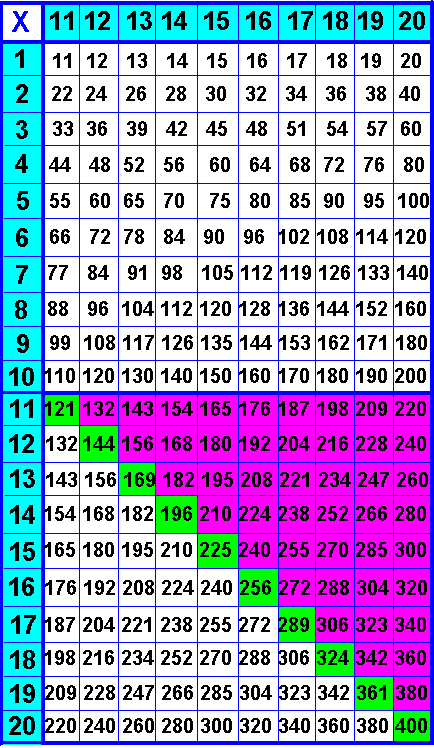Welcome to the
SUPER BRAIN TABLE
*Note:
this table is intended only for those who want SUPER math brain
power.
The effects of learning this table are rather overwhelming when
displayed to a non-math-power person.
*HERE is a deck of flash cards to help you learn these POWER facts.
*HERE is an ELECTRONIC set of flashcards. Just set it to fit your practice needs and play till you are at 100%.
*When you think you know them
all, try the
PILLARS of POWER WORKSHEET, super, ultimate, multiplication challenge.
Or if you prefer having the computer check your work, try the
PILLARS OF POWER electronic
version.
THE
MENTAL MATH POWER ZONE! guaranteed
to make you SMARTER.

Actually
this table is not really as bad as it looks at first.
You can learn the whole table by using the distributive
property.
The
bottom half contains repeats for each pair:
ex: 12 x 13 = 156 and
13 x 12 = 156
So you are really only learning half of the nos. that you see
in the bottom portion.
Take a look at the triangular shaded area below to see what we mean.

Click HERE to print out a personal size deck of SUPER Multiplication flash cards.
They are small enough to carry with you and FLASH YOURSELF often.
